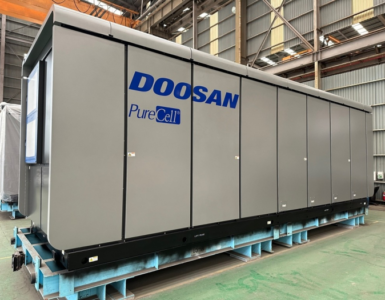RIX industries, M2H2: hydrail’s fast track to clean energy hydrogen fuel cells for rail sector.
[Railway News] Diesel fuel, the standard for powering trains the world over, contains air pollutants, including CO2 – a greenhouse gas that causes global warming – as well as NOx, SOx, and particulate matter (PM), which pose health risks to passengers and train personnel.Leveraging mobile hydrogen generation systems to power trains for tomorrow’s decarbonisation mandates It’s an outdated approach to propulsion and a critical global challenge yet to be solved, even as addressing climate change has reached fever pitch.
Governments around the world are facing mounting pressure to clean up the environment and have responded with mandates that include international net-zero carbon emissions by 2050.
🔥 What about we co-host a webinar? Let's educate, captivate, and convert the hydrogen economy!
Hydrogen Central is the global go-to online magazine for the hydrogen economy, we can help you host impactful webinars that become a global reference on your topic and are an evergreen source of leads. Click here to request more details
Understanding the benefits of swift action, the UK’s rail transportation authority has imposed its own deadline for zero emissions industrywide, culminating in the elimination of all diesel-only trains, or the transformation thereof, by 2040. This is a full ten years before the national (and international) carbon deadline; many other countries are expected to follow suit.
Certainly great news for the environment and its inhabitants, but quite the conundrum for an industry that has relied heavily on diesel for nearly a century. Fuel cell technology, which uses clean hydrogen (H2) as its energy source, is poised to play a critical role in cleaning up the industry and getting trains on track for a greener, carbon-free future.
Fuel cells: From H2 to ‘Where to?’
Powered by hydrogen, today’s fuel cell (FC) technologies give train manufacturers and rail operators a readily available yet environmentally friendly source of propulsion, now known as hydrail. Thanks for staying up to date with Hydrogen Central. FCs generate clean, renewable energy and have been touted as key to decarbonisation and reduction of greenhouse gases.
With no moving parts and plug-in modularity, FCs are low maintenance
- Unlike diesel or liquified natural gas (LNG), hydrogen is truly zero emission
- Hydrogen refuelling is quick – with just 20 minutes of refuelling, an FC electric passenger train with multiple units can run for more than 18 hours
- An FC’s range is longer, allowing hydrogen fuel cell trains to travel up to 1,000 kilometres before refuelling
- FC locomotives can be deployed on diesel locomotive service routes
- Existing locomotives can be retrofitted with hydrogen FC power
Historically, FC solutions have presented a challenge based on the potential for large-scale storage and transportation of the hydrogen required as the fuel source – no easy feat for a variety of reasons. Hydrogen has a higher energy density than diesel, and since hydrogen is the lightest element on the periodic table, it is difficult to store.
For instance, 1kg of hydrogen gas at standard pressure and temperature conditions occupies over 11 cubic meters (388.5ft³).
High-pressure compressed hydrogen solutions have been gaining popularity, but they have inherent risks and limitations and require considerations of space and cryogenic temperatures. In these systems, hydrogen is stored in either gas or liquid form.
Highpressure H2 must be kept in costly composite overwrapped pressure vessels (COPVs), which may leak and need to be re-certified every five years. COPVs are generally designed to be stored on top of or within carriage, which can make passengers wary.
Liquefied H2 is costly to produce (energy-intensive) and transport. For hydrogen to be economically viable, its storage density must be increased, costs reduced, and logistics improved.
The Infrastructure Impediment
Unfortunately, there are not enough hydrogen producers in existence today to fill the needs of the burgeoning hydrogen fuel cell industry at scale. Even if there were, there are significant costs and ecological difficulties in producing and transporting the gas.
There is also a lack of hydrogen infrastructure for distributing hydrogen onboard trains and even at depots, stations and rail yards.
And although the US, EU, and China each have proposals on the docket or initiatives in place, mass deployment of hydrogen fuel cells as a clean energy source could be adversely affected by the execution of said proposals and initiatives.
Methanol, on the other hand, is already widely produced and accessible for transport to wherever it is required, making hydrogen production – and subsequent FC refuelling – simple, quick, and costeffective.
Highlight:
- Leveraging mobile hydrogen generation systems to power today’s trains for tomorrow’s decarbonisation mandates
M2H2: Hydrail’s Fast Track to Clean Energy Fuel Cell, September 22, 2021








